Are you planning a trip to Sicily and looking for some ideas? Are you leaving for Sicily in a group and some of you like sunbathing and others like culture? No problem, read on, because I’m about to give you an idea for an excursion to Sicily that will satisfy everyone. In fact, I bring you to Agrigento, proposing a day between the Scala dei Turchi cliff and the archaeological area of the Valley of the Temples in Agrigento.
The Scala dei Turchi
Who knows how many times you have seen the Scala dei Turchi cliff in pictures and you would have said “How nice it would be to go there!”. I was in that situation until a few days ago. I had always seen it only in pictures and I really wanted to see it – as a Sicilian, I have to admit that I haven’t toured Sicily so much. “Bad, too bad!”, you will be saying; and you’re right, in fact I’ll try and fix this.
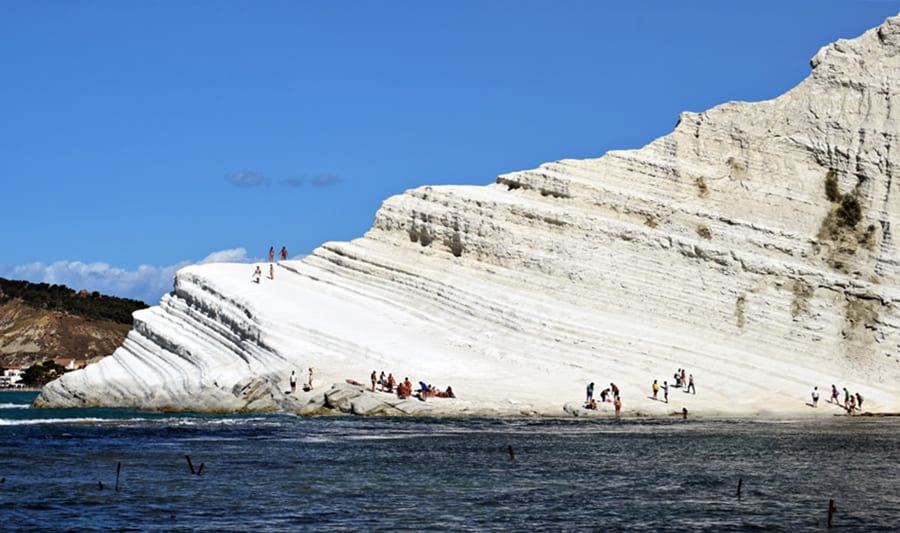
The Scala dei Turchi cliff
The Scala dei Turchi cliff is part of the territory of the Realmonte municipality, very close to the most famous Porto Empedocle (birthplace of Andrea Camilleri, writer of Inspector Montalbano’s novels, and location from which we embark for the islands of Lampedusa and Linosa).
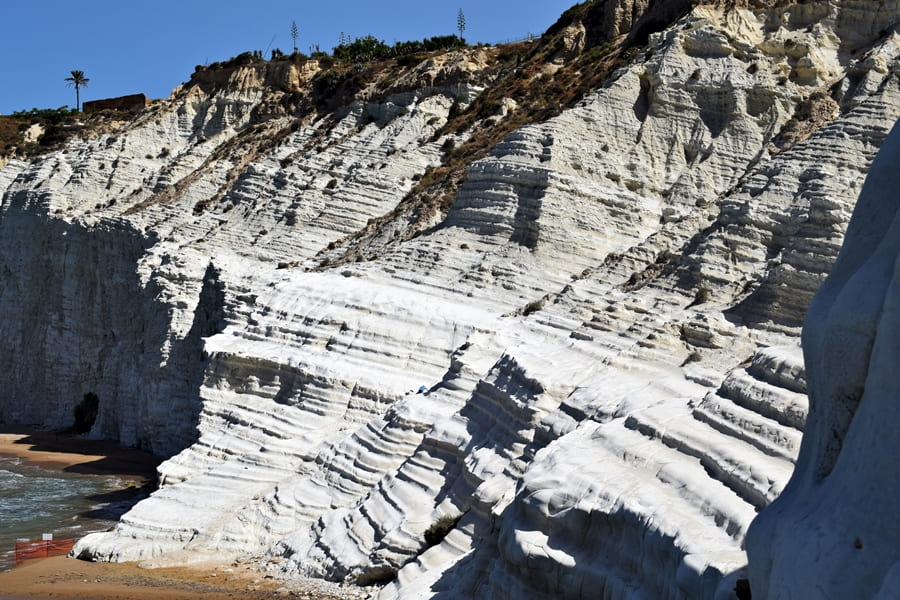
The Scala dei Turchi white cliff
It is a very white cliff made of marl, which is a mixture of limestone and clay. In addition to its white color, the Scala dei Turchi cliff is striking for its shape.The marl is a very delicate material that is easily shaped by atmospheric agents and by the sea. This has allowed over time that the cliff formed the steps that characterize it, hence the name Scala dei Turchi (literally Stair of the Turks).
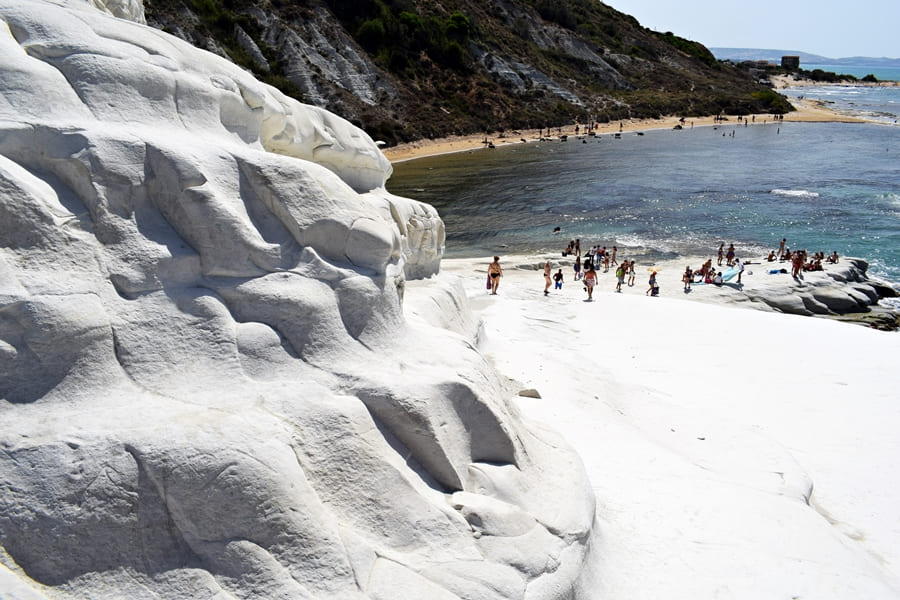
Walking on the Scala dei Turchi cliff
They call it stair because of the shape of the cliff, but why “of the Turks”? According to a legend, this cliff was used by the Saracens to shelter from the wind and enter Sicily. This is just a legend, because historical evidence tells us that the Saracens came from more spots in Sicily.
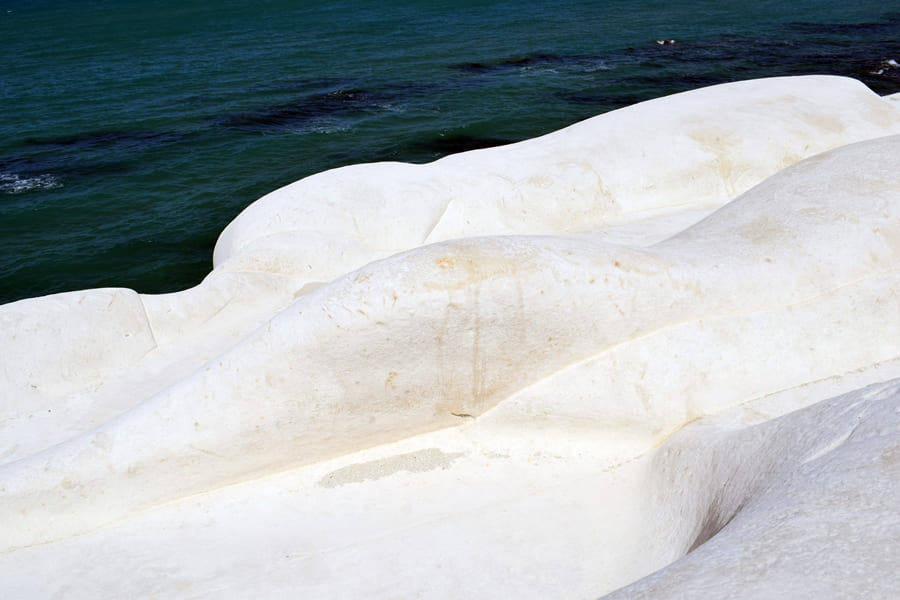
The marl of the Scala dei Turchi cliff shaped by the wind
Many people believe that the marl has good effects on the skin and they use to sprinkle their body of marl while sunbathing. In reality, that’s not entirely true; indeed, this practice has negative effects on the Scala dei Turchi cliff and authorities are thinking of fining those who practice it.
The Valley of the Temples
After a morning spent at the seaside, among sunbathers, baths and white cliffs, here is a good and healthy afternoon dedicated to culture. But not in whatever place. Let’s go to the Valley of the Temples in Agrigento, a UNESCO World Heritage Site since 1997, which was awarded the Italian Landscape Award 2017.
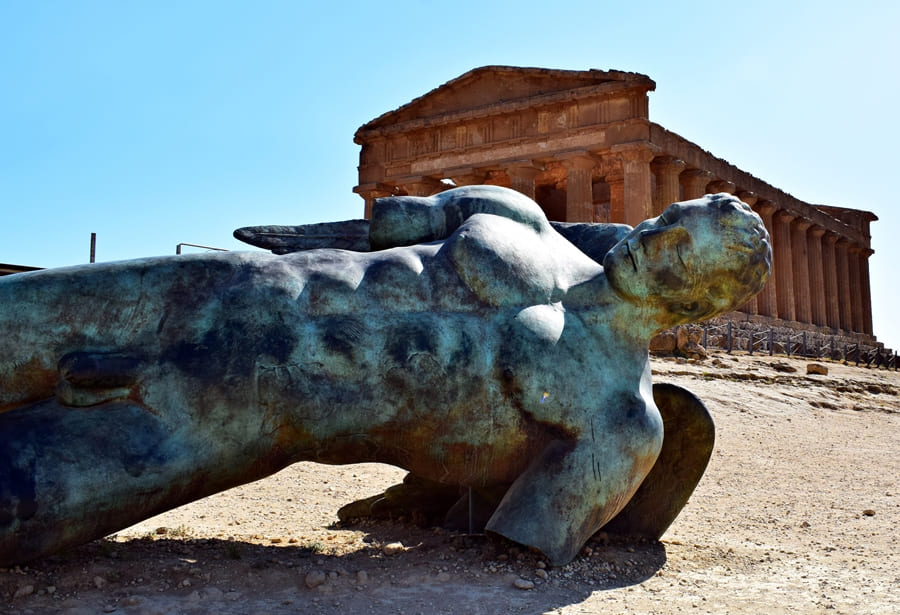
Bronze sculpture of Icarus by Igor Mitoraj
In reality, the Valley of the Temples isn’t located in a valley, but on a hill. Entering from the main entrance, the route that connects the temples is downhill, so an excellent solution especially in summer during very hot days. Where today stands the archaeological park, there was city of Akragas, the ancient Agrigento. That area was used until the Roman age; later, with the advent of Christianity and the subsequent Arab invasion, Agrigento “moved” on the Girgenti hill, where today you see the modern city. All the temples are built with the local stone, the sandstone tuff, of a yellowish colour. The colour of the stone makes the temples particularly beautiful to see at sunrise or sunset, when they take on a golden colour.
Temple of Juno
After the entrance, you immediately get to the Temple of Juno (Hera if we consider the Greek name). It was built in the 5th century a.C. and had a fairly troubled history. About 50 years after its construction, it was in fact burned by the Carthaginians; in the 3rd century a.C. it was expropriated of the roof by the Roman consul Quintus Fulvius Flaccus, who urgently needed marble; and finally, in the Middle Ages it was strongly damaged by an earthquake. The result is what we see today: only 25 of the original 34 columns are standing, thanks to a restoration work carried out in the 18th century.
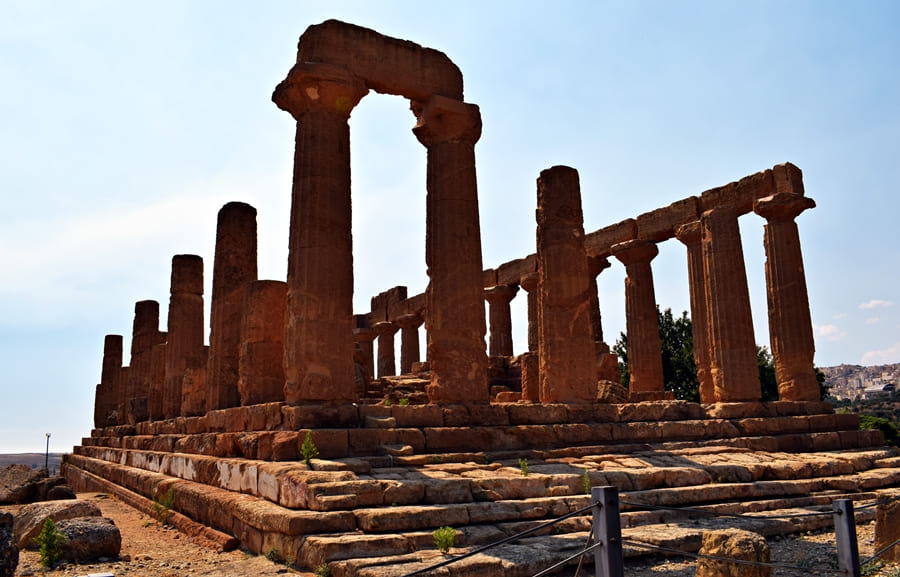
Temple of Juno
Temple of Concordia
The nearby Temple of Concordia was “luckier”. It is the best preserved temple of the whole Valley of the Temples archaeological park. Like the Temple of Juno, it was built in the 5th century a.C., but managed to get undamaged to us, because it was transformed into a Christian temple in the 6th century. Today it is dedicated to Concordia, because inside it has been found a Latin incision dedicated to concord, but it is not known precisely to whom it was dedicated in the Greek age.
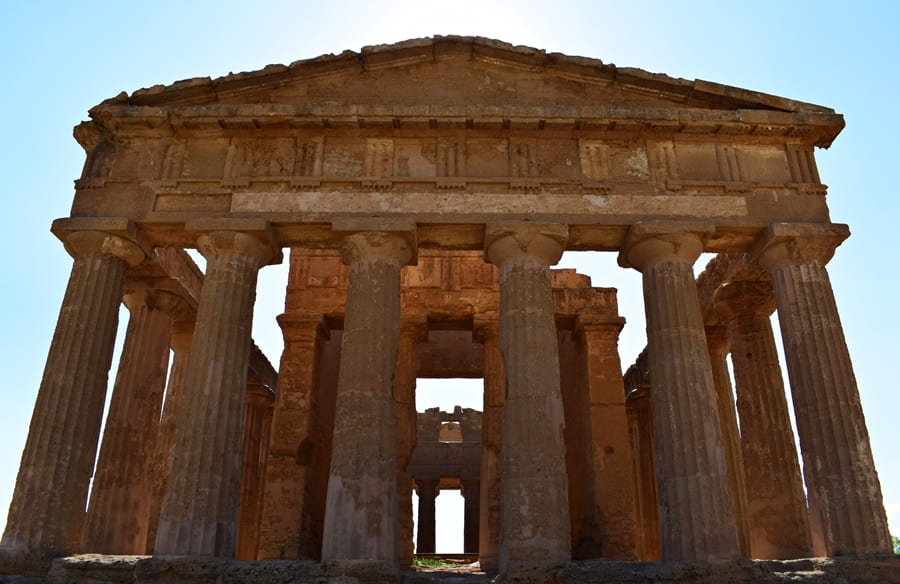
Facade of the Temple of Concordia
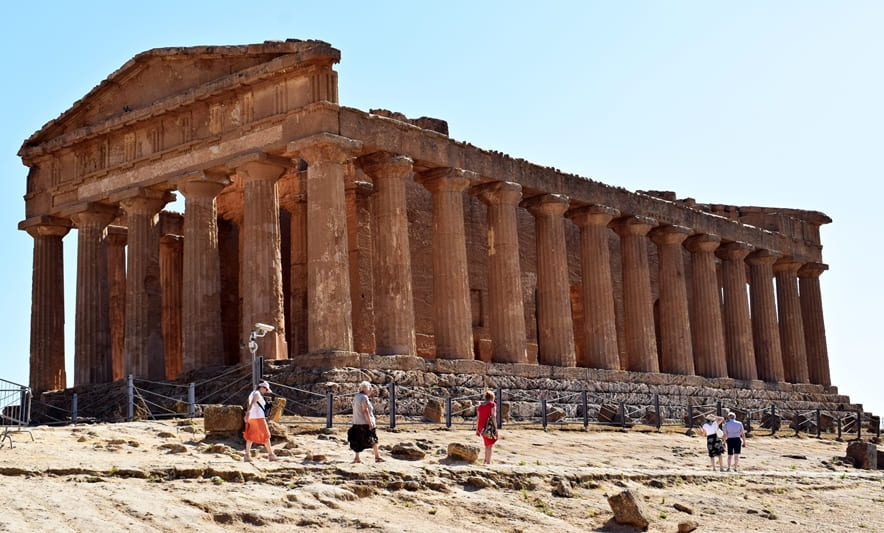
Temple of Concordia
Villa Aurea
Continuing the descent along the archaeological park, we find Villa Aurea. It is a villa a few steps away from the Temple of Concordia, which belonged to the British Army Captain Sir Alexander Hardcastle, the patron who spent his fortune in the 20s of the last century to finance the excavations in the Valley of the Temples. Inside, exhibition spaces are set up.
Temple of Hercules
Descending further down, you arrive at the Temple of Hercules (or of Heracles). This is the oldest temple of the Valley of the Temples archaeological park. The first settlers raised it in honor of Hercules to thank him for protecting them in their crossing from the Greek islands to Sicily. Only 8 of the 38 original columns remain standing, thanks to the renovation work funded by the patron Hardcastle.
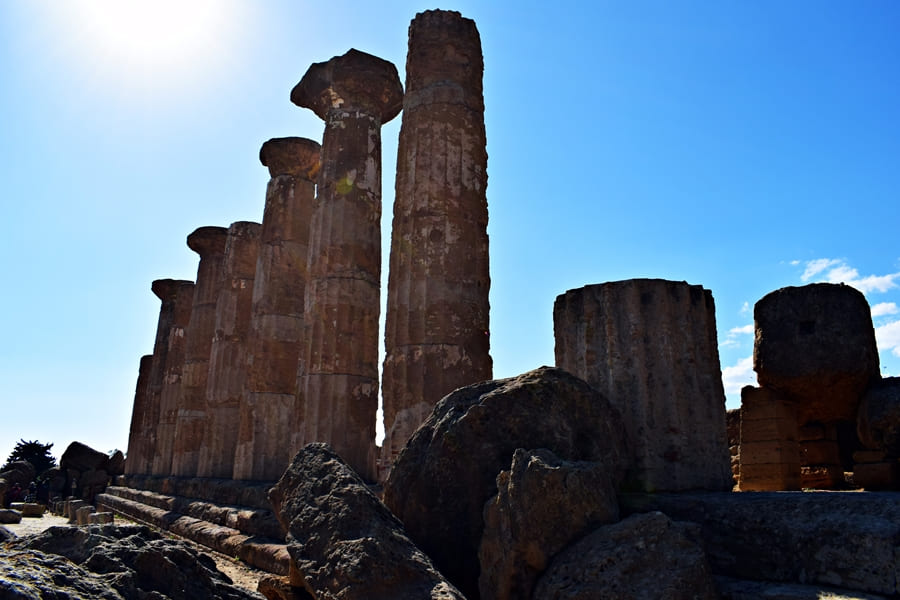
Temple of Hercules
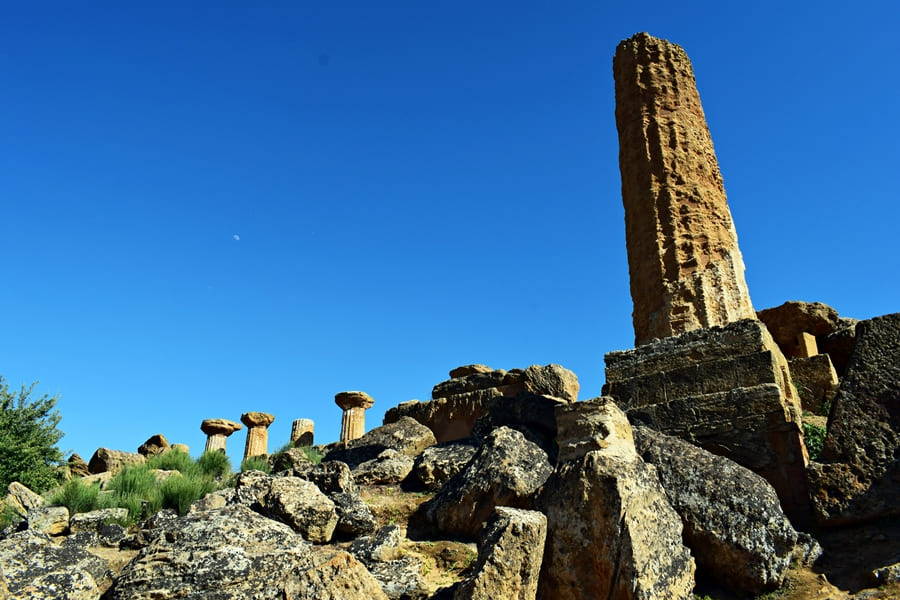
Ruins of the Temple of Hercules
Temple of Zeus
A little further down is the Temple of Olympian Zeus (or Jupiter), of which only ruins remain. Originally, it was a very impressive sacred building, given that it was calculated that the columns could reach 17 meters in height. In addition to this, its façade was different from the one of the other temples due to the presence of the telamons, that is human figures made of stone placed between the columns. Even the telamons have been destroyed (like the rest of the temple), but one is displayed vertically at the Archaeological Museum in Agrigento. The temple was short-lived, because it was completely destroyed by earthquakes and lootings. And that’s not all: it was even used as a source from which to draw the material for the construction of the port of Porto Empedocle.
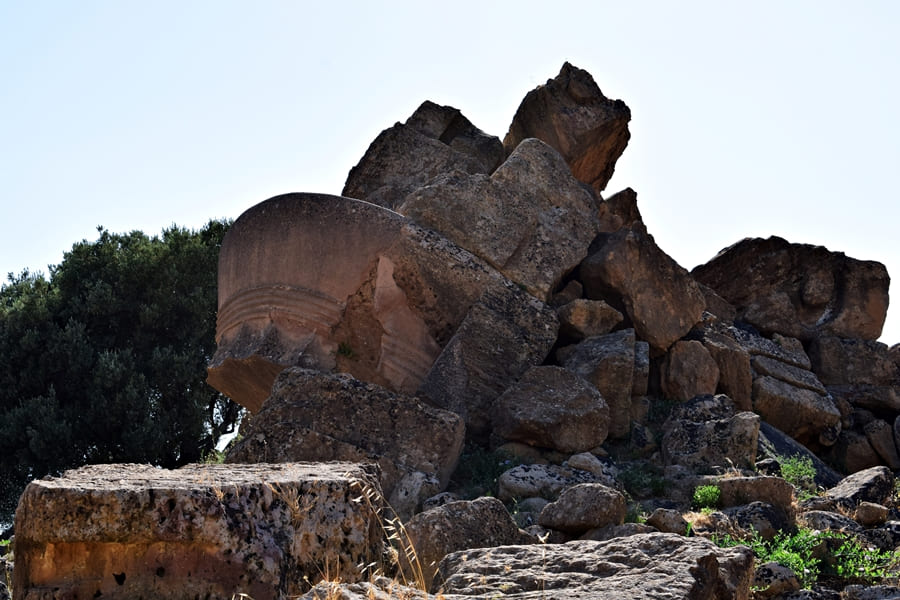
Ruins of the Temple of Zeus
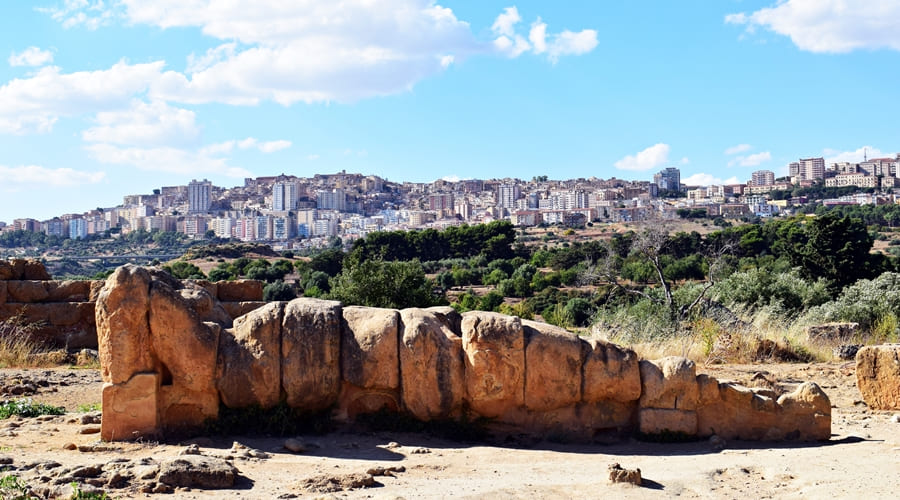
Reconstruction of a telamon of the Temple of Zeus
Other things to see in the Valley of the Temples
The Valley of the Temples is not only this: walking through its 1,300 hectares, you will find ten temples (or what remains of them), shrines, necropolis and remains of housing units, all surrounded by nature, among olive and almond trees. An excellent time to visit the Valley of the Temples is the blooming time of almond trees, around February. That’s not all, recent excavations are bringing to light the Greek theatre, so in a little while we will have the chance to see it.
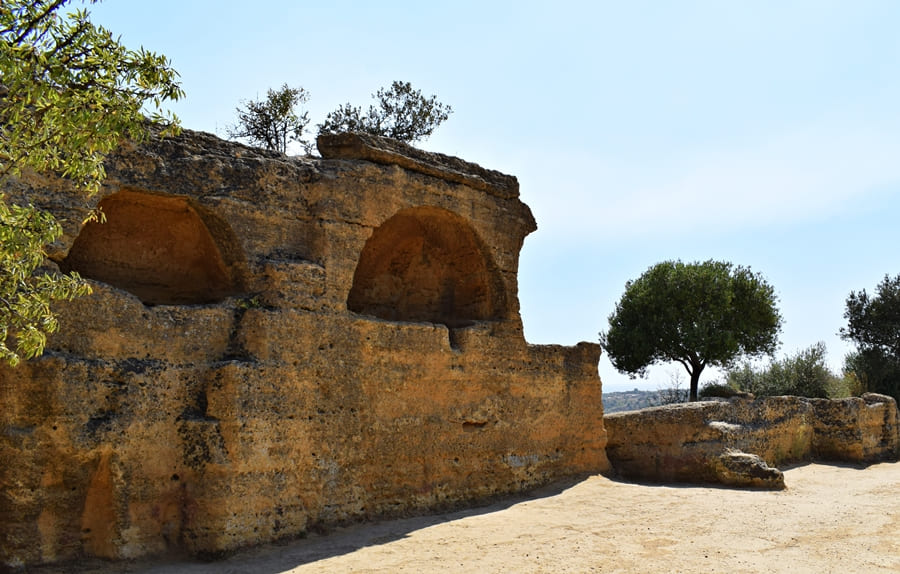
Remains of the Greek fortifications
For more information on the Valley of the Temples Archaeological Park, you can see the official website. In addition to this, if you are looking for other ideas for your trip to Sicily, click here.

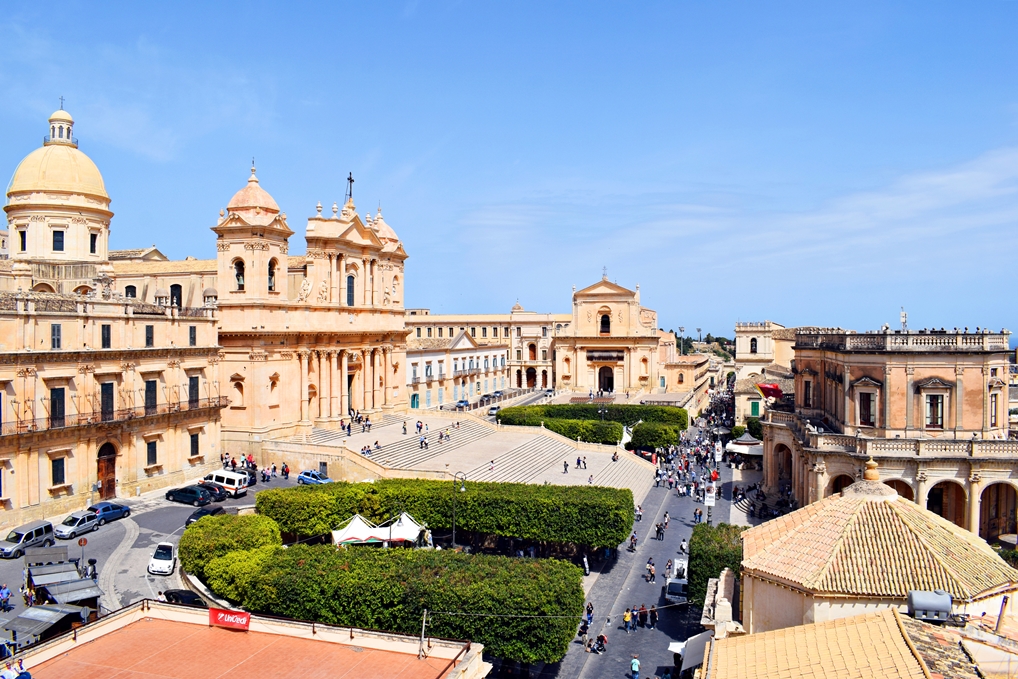
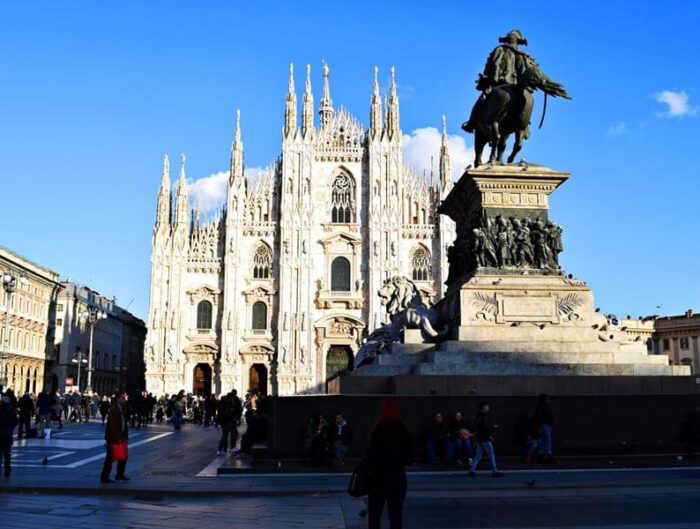









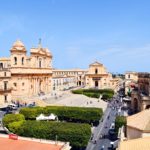



Leave A Reply